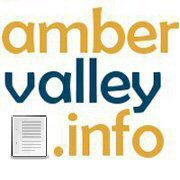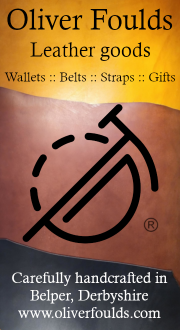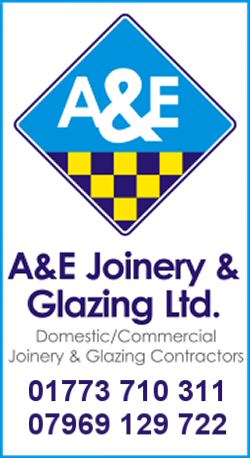The Village Of Duffield
Categories: Local Information
Duffield is a village, situated next to the River Derwent, at its junction with the River Ecclesbourne in Derbyshire at the lower end of the Pennines around five miles north of Derby, England.
Early history
There have been humans in the area, probably, from the Iron Age. While it has been suggested that, once farming began, they would have inhabited the plains of the Derwent and Ecclesbourne, they would most likely have retreated to higher ground during the winter floods.
It is also controversial whether there was a Roman fort to protect the ford across which the caravans of lead from Wirksworth joined Rykneld Street at Derby, en route for the North Sea ports.
A few remains have, however, been found of Anglo-Saxon occupation by a person, or persons, of some substance. The Domesday Survey records "Duvelle" as being within the wapentake or hundred of Morleystone. In Norman times, Duffield Castle was built to protect the hunting grounds of Duffield Frith, awarded to Henry de Ferrers (or de Ferrars) by William I. Most of this became the ancient parish of Duffield, which contained the townships of Hazlewood, Holbrook, Makeney, Milford, Shottle, and Windley, and the chapelries of Belper, Heage, and Turnditch.
Meanwhile St Alkmunds Church was built some quarter of a mile to south. Its position, so far from the village, it is thought, arose from its purpose, in Anglo-Saxon times, of serving travellers crossing the river on their way from Ashbourne to Nottingham. The original part of the present building, however, is Norman. Duffield Bridge was built across the river, next to the present Bridge Inn, in the thirteenth century and widened in the eighteenth. This later became the main road to the north and, in the eighteenth century the road along Duffield Bank was improved, as the 'New Chesterfield Turnpike'.
Meanwhile, there was a growing community next to Duffield Castle built by Henri de Ferrers. For many centuries, Duffield was by far the largest centre of population in the parish. Following the rebellion by Robert de Ferrers, 6th Earl of Derby his lands became part of the Duchy of Lancaster until the reign of Charles I. These included the manor of Duffield and seven parks in Duffield Frith namely, Ravensdale, Schethull (Shottle), Postern, Bureper (Belper), Morley, and Schymynde-cliffe, (Shining Cliff) In the Parliamentary Commissioners' report of 1650 respecting Duffield and its chapelries, Belper is described as "a hamlet appertaining to Duffield." One other near Duffield was Champain Park to the South West, in the area of what is now Champion Farm on Cumberhills.
Some idea of Duffield's prosperity can be gained from the size of the Church and its later additions. In the forest there had been plentiful game, and a supply of timber, particularly oak, while the farmland was exceedingly fertile, though prone to flooding. Even with the controls on the rivers with the various weirs and dams in the eighteenth century, the centre of the village was subject to regular floods until the middle of the twentieth century.
Medieval history
A notable resident in the sixteenth century was Anthony Bradshaw who erected a monument in the Church to himself and his large family. He was grandfather to John Bradshaw, who condemned Charles I to death.
Sir Roger Mynor was High Sheriff in 1514, Sergeant of the King's Cellar, an official of Duffield Frith under the Duchy of Lancaster and a Commissioner of Peace for the County of Derby. He, with his lady, has a magnificent table-tomb in St. Alkmunds Church, Duffield.
The first school in Duffield was Duffield Boys' Endowed School, now known as the William Gilbert School, originally in the centre of the village next to the Ecclesbourne. On 21 June 1565, we read that "at a court of the Manor of Duffield Frith, William Gilbert surrendered a cottage and lands and closes for providing and sustaining an honest and learned man within Duffield Frith, to teach and instruct boys in honest and pious discipline and literature." The schoolmaster's wages were settled at 12d. a quarter for every scholar being a grammarian, and 8d. for everyone inferior to a grammarian; but he might take other private pupils.
The medieval manor was replaced in about 1620 when Duffield Hall was built.
Nineteenth Century
The major activity up to the nineteenth century was agriculture. There were two cattle-fairs; the Thursday after New Year's Day, and the 1st of March. Ironstone is associated with coal deposits in Derbyshire, which outcropped in the Belper and Duffield areas. It is thought that these were what attracted the de Ferrars family to the area, and there are frequent references to iron-working in historical records, with a forge near to the present Baptist Chapel. There were also a number of corn mills and quarries. Flax, for linen, had been grown in Flaxholme, from the fifteenth century, on the instructions from King Henry V. Silk thread began to be produced in quantity by John Lombe in Derby, likewise cotton thread in Belper. By the nineteenth century, the major occupation in the village itself, was framework knitting, encouraged by Jedediah Strutt's famous 'Derby Rib', while a paper mill opened at Peckwash.T
he biggest change came with the coming of the railway. The village is served by Duffield railway station, the history of which is dealt with more fully there. The North Midland Railway passed through in 1840 with probably little more than a halt at Duffield. It however cut the lane to the church. Probably at this time there was simply a level-crossing, since the footbridge is of the same pattern as those on the station when it was extended by the Midland Railway. The halt was slightly north of the present station. The main road had been previously realigned on the west side of the cottages known as Castle Orchard, with a slice out of the castle mound, leading to a new road north called New Mills Road. The railway northwards followed the alignment of the old road with a magnificent stone built skew arch bridge under the new one.
A permanent station was opened in 1841 in its present position, as the village expanded with homes for the Midland Railway workers and management, the former settling in the village around the end of King Street, the managers in larger houses further along the main road and further up King Street and Hazlewood Road.
When the new station was extended with the Wirksworth branch, it created a good deal more upheaval, since the line cut across the road north out of the village. This was along the side of the Kings Head joining the present Chapel Street and in front of the station. It already had been rebuilt in 1835, raised to a higher level because of the frequency of flooding. A new road was built on the other side of the King's Head with a bridge over the branch. In addition, a tunnel was driven under King Street.
Around this time a new boys' school was built in Vicarage Lane, with a girls' school lower down King Street, with the Infants' School opposite. Less well-remembered, though revered by narrow, 'minimum gauge', railway enthusiasts, was the Duffield Bank Railway, built by Sir Arthur Heywood at his house to the east of the village.
Twentieth century
The coming of Rolls-Royce in the 1910s brought further expansion, with even bigger houses up Hazlewood Road, and council-provided housing along Holloway Road.
Throughout the 'thirties and 'forties, middle class housing was appearing in the old Wirksworth Road, and in Flaxholme. The semi-detached houses to the west of Cumberhills Road are something of a mystery. Clearly they were a speculative middle-class project, but in 1910 they were isolated among fields half a mile from the village - hardly attractive, one would have thought, to prospective purchasers.
For such a small village, Duffield seems to have been well served with public houses. Near the church was the White Lion and nearby on the main road at the south, there was the Noah's Ark, a coaching inn. Still in existence is the White Hart, which is not the original building, and a little further up, was the Nag's Head. Next is the King's Head, probably the oldest still in existence. When the Commissioners appointed by Parliament to divide up the common and waste lands of Duffield Parish sat in 1787, they held their meetings at the King's Head.
At the top of Crown Street used to be the Crown Inn, and still existing up Hazlewood Road is the New Inn, although this is now been converted to a private dwelling. Outside it are broad flat-topped walls. In the days before Hazelwood had its own cemetery, it is said that funeral parties would stop for refreshment before completing their journey to the church, and would leave the coffin resting on that wall. There was also a Railway Inn near the station and a Castle Inn, near the Parish Room. The Patten Makers' Arms is in Crown Street, named after the pattens which were a type of clog that people made there.
In 1957 The Ecclesbourne School was founded, when George Wimpey, the building developer, built new estates, raising the population to around 5000. One was between Wirksworth Road and the River Ecclesbourne. The other was to the south of Wirksworth Road, extending New Zealand Lane and the previously privately-maintained Broadway. The intention was for the latter to meet the Wirksworth Road at Cumberhills Road, but where it crossed New Zealand Lane, the landowner refused to sell and it was several years before there was a through right of way.
The attraction of the village for housebuyers centres around the successful secondary school, Ecclesbourne. Now Mrs Underhill is planning to build houses in the field behind Meadows school, to pay for a renovation of Ecclesbourne Secondary School, including new sports facilities.
Duffield is the home of the Derbyshire Building Society at Duffield Hall, just south of the village centre.
Schools
Primary Schools
William Gilbert Endowed School
Duffield Meadows School
Secondary schools
Ecclesbourne School
Sports
Duffield Squash Team
Duffield Cricket Club
Duffield Dynamos Junior Football
Duffield Rangers FC
Eyes Meadow is currently the home of the cricket and football teams. Duffield cricket club have recently been given planning permission to create another cricket field on Eyes Meadow.
External Sites
http://www.duffieldderbyshire.co.uk/
http://myweb.tiscali.co.uk/johnrex/
http://www.jjb.uk.com/duffield/
Duffield CC
Duffield Rangers Official site
Original information taken from Wikipedia
http://en.wikipedia.org/wiki/Duffield,_Derbyshire
Distributed under a Creative Commons licence
http://creativecommons.org/licenses/by-sa/3.0
| Upload Files | Update Listing | Search Similar | Advertise |
|---|






















